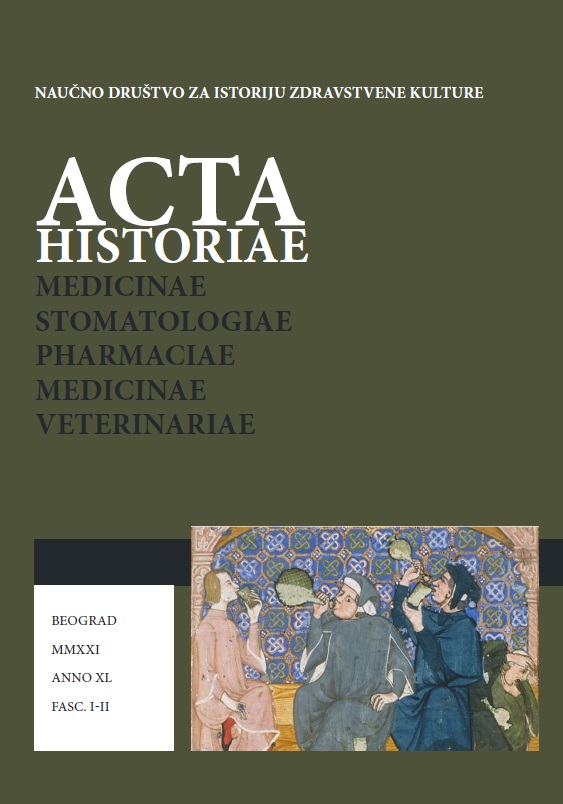THE ARCHBISHOPRIC OF KARLOVAC IN THE SERVICE OF HEALTH – PLAGUE EPIDEMIC IN SYRMIA 1795–1796
THE ARCHBISHOPRIC OF KARLOVAC IN THE SERVICE OF HEALTH – PLAGUE EPIDEMIC IN SYRMIA 1795–1796
Author(s): Nenad Ninković, Goran VasinSubject(s): Social history, 18th Century
Published by: Naučno društvo za istoriju zdravstvene kulture
Keywords: plague; quarantine; Syrmia; Archbishopric of Karlovac; Stefan Avakumović; Stefan Stratimirović
Summary/Abstract: The plague which led to a high mortality rate and left severe consequences in Syrmia during the second half of 1795 and the beginning of 1796 is not a topic unknown in historiography. It was studied on the basis of reports sent by the Health Commission to various state institutions, but also from memoirs. A particularly important place here belongs to the description of the epidemic by Franz von Schraud, who was sent to Syrmia as a doctor precisely because of the plague. Researchers also touched on the role of the Archbishopric of Karlovac, primarily through several epistles of archbishop Stefan Stratimirović, which were published in 1940. However, an entire corpus of documents remained unknown, although it provides a picture of the events. This historical material was created as a consequence of the fact that the archbishop was not present at his headquarters (Sremski Karlovci) during the plague epidemic, so the archimandrite of the Grgeteg monastery – Stefan Avakumović, and the protopresbyter from Sremska Mitrovica – Gavrilo Isaković regularly informed him about the situation in Syrmia and their activities. Additional importance to this material is given by the fact that Avakumović was part of the escort of the royal commissioner sent to Syrmia due to the plague – first baron Pichler, and then baron Lovas. With them, he visited all places in the Syrmia County with infected people, but also the ones in their vicinity where the infection was not transmitted. During that time, Isaković was entrusted with the management of all Orthodox faithful in the Petrovaradin Regiment of the Military Frontier, which Avakumović did not enter. Their letters show how the church was organized with the mission of preventing the spread of the epidemic; all orders of the Health Commission were published through it, because priests could reach all residents easily and they were the only ones who knew them personally. The Church accompanied all state orders with its comments, in order to convince the people that changes in liturgical and funeral practices are not in conflict with the Orthodox teaching and thus facilitate their acceptance. The paper also points out how the church helped the population and the Syrmia County economically, but also documents what abuses existed, both by the County and by the population in the vicinity of the Syrmia monasteries. The material on the basis of which the work was written is located in the Archives of SANU in Sremski Karlovci.
Journal: Acta historiae medicinae, stomatologiae, pharmaciae, medicinae veterinariae
- Issue Year: 2021
- Issue No: 40
- Page Range: 28-37
- Page Count: 10
- Language: English

